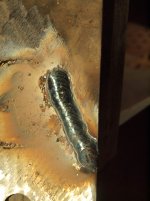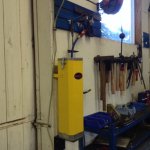arrow
Super Member
I split my wedge off of the splitter so now I have to re-weld it back on. The splitter came from Northern 16 years ago but I am assume they used their own splitting wedge when they built this one. At any rate, they call for a "low hydrogen" rod to weld their wedges on. Low hydrogen to me means a 7018 rod. Curious as to why a 3/4" thick piece of metal or any thickness for that matter needs low hydrogen otherwise is there an important reason why I cannot use 6011 for the root and 7014 for the fillets?.

